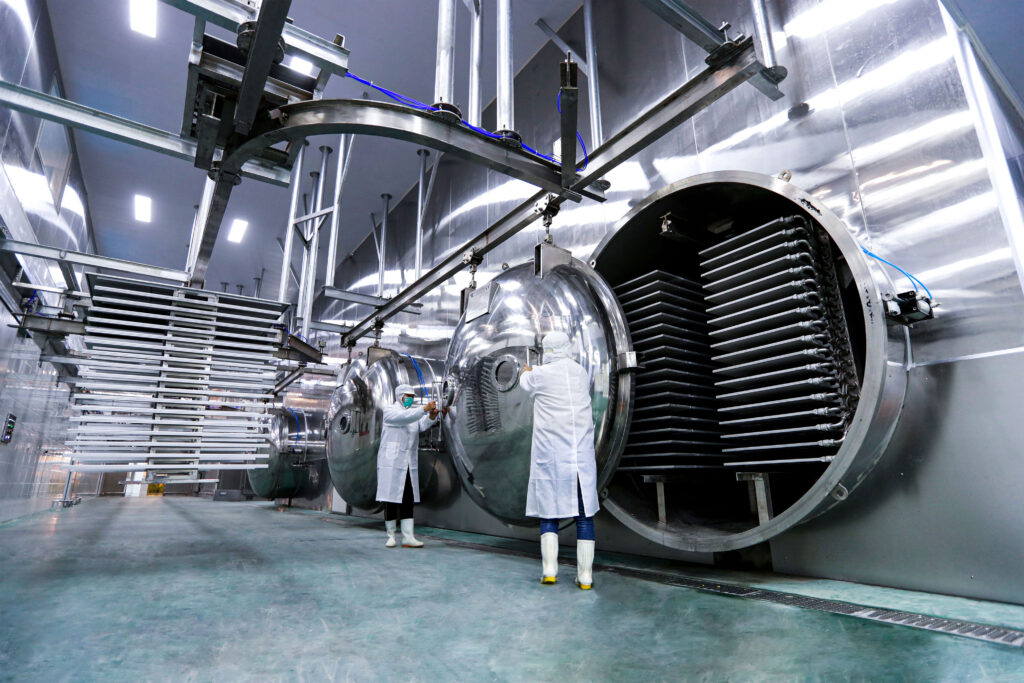Table of Contents

Comprehensive Guide to Freeze Drying Technology: Principles, Process & Applications
What is Freeze Drying Technology? (Freeze Drying Technology & Process)
Freeze drying, also known as lyophilization technology, is a preservation method that removes moisture from substances through a low-temperature freezing and vacuum dehydration process. The core principle of freeze drying is sublimation, where solid ice directly transitions into water vapor without passing through a liquid phase. This ensures the preservation of the original structure, nutrients, and bioactivity of the material.
Common Applications of Freeze Drying Technology:
Food Industry: Freeze-dried fruits, coffee, instant meals (e.g., astronaut food)
Pharmaceuticals: Long-term storage of vaccines, antibiotics, and plasma
Scientific Research: Preservation of biological samples and enzymes
Cosmetics: Freeze-dried serums and active ingredients in facial masks
How Do Freeze Dryers Work? (Freeze Dryer How It Works)
A freeze dryer operates in three key stages to efficiently remove moisture while maintaining product integrity:
1. Freezing Stage
The material is frozen to -30°C to -50°C, ensuring complete solidification.
Lower temperatures create smaller ice crystals, preventing cellular damage—critical for biological products.
2. Primary Drying (Sublimation Process)
The vacuum system reduces pressure while applying controlled heat (still below 0°C).
Ice directly sublimates into water vapor, which is continuously removed by the vacuum pump.
3. Secondary Drying (Moisture Removal)
Temperature increases to 20°C – 30°C to eliminate residual bound water.
The final product retains only 1% – 4% moisture, significantly extending shelf life.
Key Advantage: Compared to dehydration, freeze drying preserves over 95% of nutrients and ensures excellent rehydration properties.
Freeze Drying vs. Traditional Dehydration: Why Choose Freeze Drying? (Freeze Dryer Uses & Benefits)
| Comparison | Freeze Drying (Lyophilization Technology) | Dehydration (Hot Air Drying) |
|---|---|---|
| Process | Low-temperature vacuum sublimation | High-temperature (50°C-70°C) evaporation |
| Nutrient Retention | Extremely high (>95%) | Partial loss (e.g., Vitamin C loss >40%) |
| Texture | Crispy, easy to rehydrate | Hard, slow to rehydrate |
| Shelf Life | Up to 25+ years (sealed packaging) | Typically 1-5 years |
| Energy Consumption | Higher (requires vacuum & refrigeration) | Lower |
| Best Use Cases | High-end foods, pharmaceuticals, research | Everyday dried fruits, jerky |
Core Applications of Freeze Drying (What Does a Freeze Dryer Do?)
Food Industry
Freeze-dried coffee (e.g., Starbucks VIA instant coffee)
Lightweight survival and camping food (long shelf life, easy preparation)
Pet treats (retains natural flavors and nutrients)
Pharmaceuticals & Biotechnology
Vaccines & pharmaceuticals (e.g., mRNA vaccines require freeze-dried storage)
Blood plasma & antibiotics
Research & Specialized Uses
Microorganism & bacterial culture preservation
Artifact restoration (preserving fragile specimens)
Conclusion: Why is Freeze Drying Technology Essential? (Lyophilization Technology)
Freeze drying technology is indispensable across industries due to its low-temperature processing, superior nutrient retention, and extended shelf life. While freeze-drying equipment requires a higher investment, it remains the best choice for high-quality preservation in food, pharmaceuticals, and research applications.
